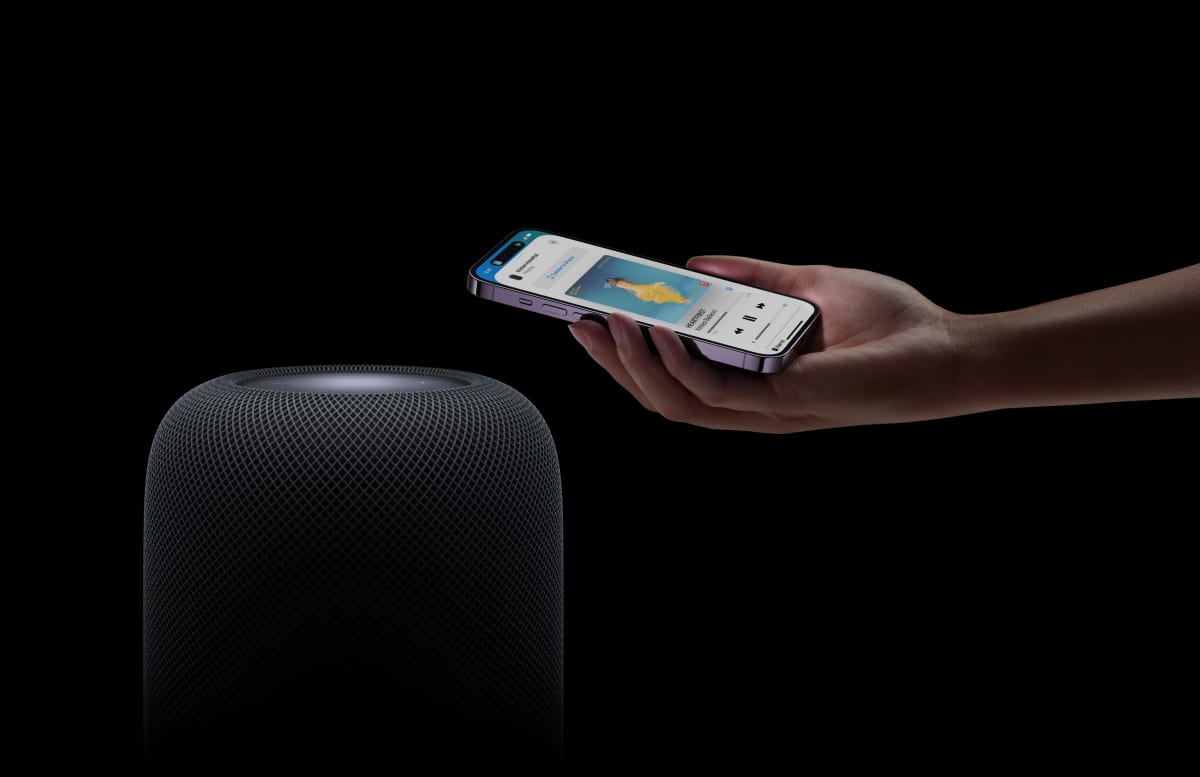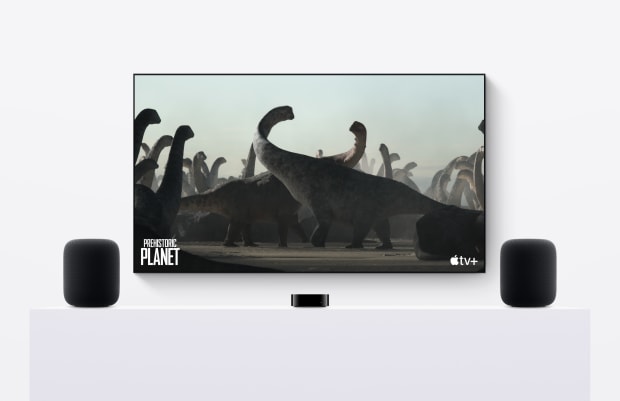
Back in 2018 Apple entered the smart speaker market with the $349 HomePod. It delivered vibrant sound with strong bass and provided hands-free access to Siri. It got a $50 price cut a few years in and ultimately was discontinued in 2021. Apple (AAPL) filled its place with the $99 HomePod Mini.
It’s back now, though. After unveiling three new Macs, HomePod second-generation is now official. A speaker with improved audio chops and new smart home features for $299. It sits as the older sister or bigger brother to the HomePod Mini, which remains the entry-level option.
Let’s break down what is new with HomePod second-generation and how it compares. Now, if you’re sold, it is up for order at $299 and starts shipping on Feb. 3 2023.
The Arena Media Brands, LLC and respective content providers to this website may receive compensation for some links to products and services on this website.
HomePod: What You Need to Know

In terms of looks, the HomePod is still an average sized circular smart speaker at 5.6-inches wide and 6.6-inches tall. It’s wrapped in a mesh outer shell, similar to that of the HomePod Mini, and the new “Midnight” color is made of 100 percent recycled mesh fabric. The power cable is woven and it's now removable by the user, if you choose to do so. Unlike the Mini which comes in five colors, the HomePod will also be available in White which is made from 30% recycled fabric.
As for controls, you can use your voice to chat with Siri for music, smart home controls, or other requests. Apple is keeping the circular display up-top, it’s described as a “backlit touch surface” so it’s not the ‘HomePod with a Display’ that many were hoping for. Still this can be used to control playback—for instance tap to play or pause—and glow colors to indicate something. It should be similar to the original, though from photos it does appear larger.
Under the hood, or should we say the mesh fabric, is an impressive audio stack. In fact, it is similar to the one that impressed us on the original smart speaker. It’s a four-inch high-excursion woofer, five horn-loaded tweeters with a neodymium magnet for each, and a motor to create the audio. This is actually two less tweeters than the original as well.
Controlling all of it will be the Apple-made S7 system-on-a-chip which is a step up from the A8 in the first-generation. There are also four onboard microphones, as opposed to six.
The chip controls the hardware along with the computational audio mix and delivers the best sound for the room. Essentially using sensors and microphones that are built-in to adjust the music in real-time. It worked on the original, along with computational audio on the HomePod Mini, for a rich, crisp mix. You’ll be able to stream songs via Apple Music, but the HomePod packs support for AirPlay 2 as well. Allowing you to cast to the speaker from an Apple device from a bevy of other services. You’ll want to use Apple Music to get the Spatial Audio experience though.
As with the original HomePod, the HomePod Mini, and other AirPlay capable speakers you’ll be able to group the $299 smart speakers together in a stereo pair or just a multi-speaker group for playback. You can also easily use a HomePod or two as TV speakers when paired with an Apple TV.
So what’s new? Well, the second-generation is adding in ‘Ultra Wideband Connectivity’ which will allow you to pass content from a device like an iPhone. Essentially tap the top of the HomePod or approach it, and playback can switch from that device to the speaker. It’s a handoff mechanism, which is part of the broader continuity between Apple devices.
Related: Apple AirPods Pro Second-Gen Review
There are also three things when it comes to the smart home. Via the onboard microphones, and some training, the homePod can recognize sounds in the home and alert you. Think of a smoke detector ringing or a carbon monoxide alarm blaring. The HomePod can identify it, and alert members of the family, via the Home app.
Inside the HomePod are two sensors, one for temperature and one for humidity to let you check either data point easily. This can also feed into Apple’s Home app to trigger a routine. For instance if the temperature drops or rises, it can turn on heating or cooling.
Lastly, the HomePod is a full-fledged smart home hub for the Apple ecosystem like the HomePod Mini or Apple TV 4K. It has Matter support onboard to let you add those smart home devices and to control them.
Let’s Recap the New HomePod

And that about sums up the HomePod so far, we’ll of course update if we find out more. But it seems to be a similar audio hardware setup with a better processor to produce room-filling sound that is both rich and vibrant. It stills a Siri smart speaker that will benefit from the improvements to Apple’s virtual assistant over the years and has triple-threat of new smart home features.
If you’re sold it’s available to order now for $299 and will begin arriving on Feb. 3. You can pick from white or Midnight for colors as well. And it’s likely ideal for those in the Apple ecosystem looking for a rich, room-filling speaker with deep integration ro to step up TV sound with an Apple TV 4K connected.
We’re eager to go hands-on and will circle back with our full thoughts, and in terms of how this compares to the likes of 4th Gen Echo, Echo Studio, and the Sonos One.
Prices are accurate and items in stock at time of publishing.







